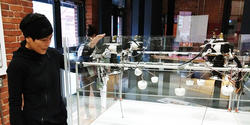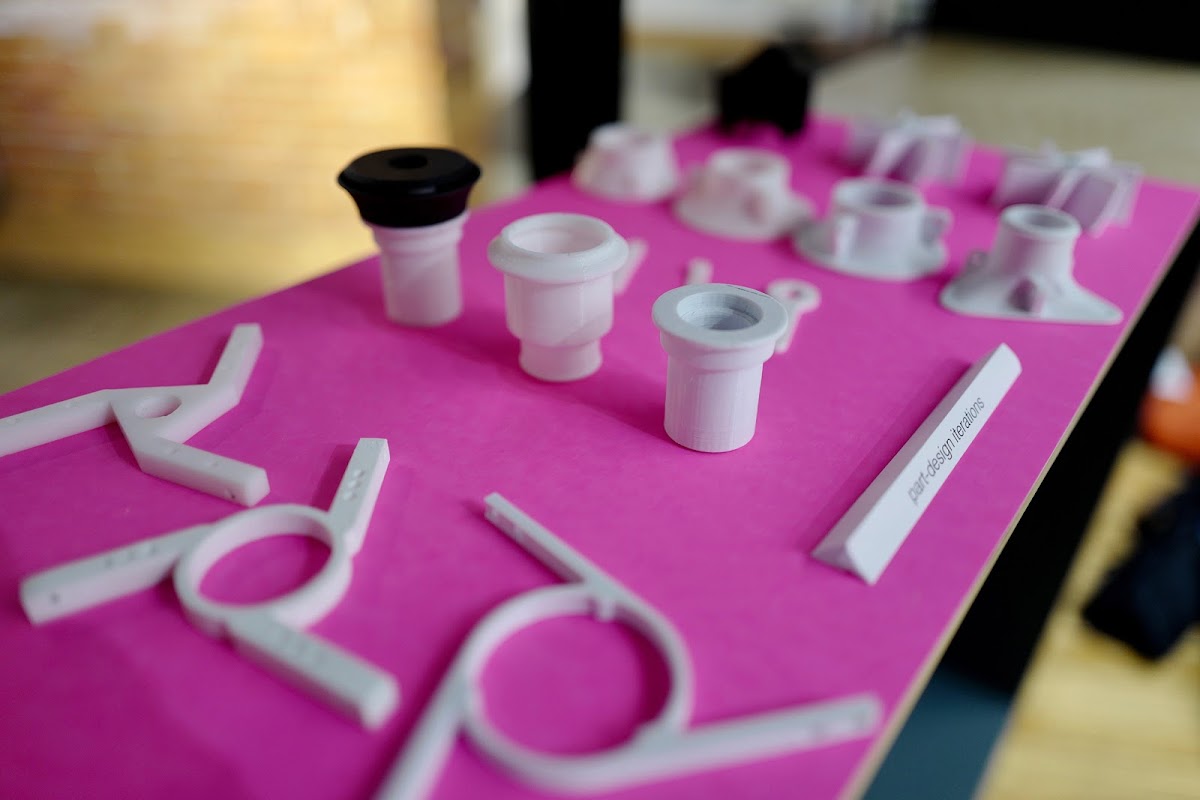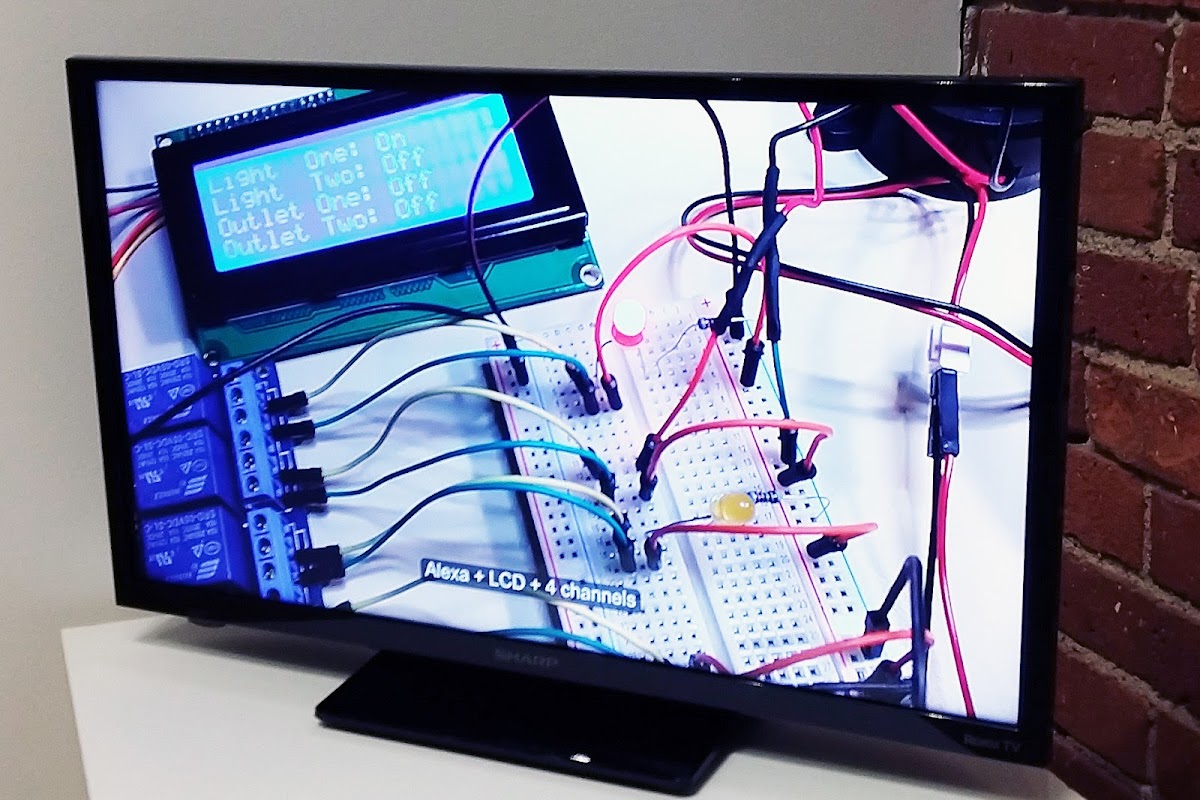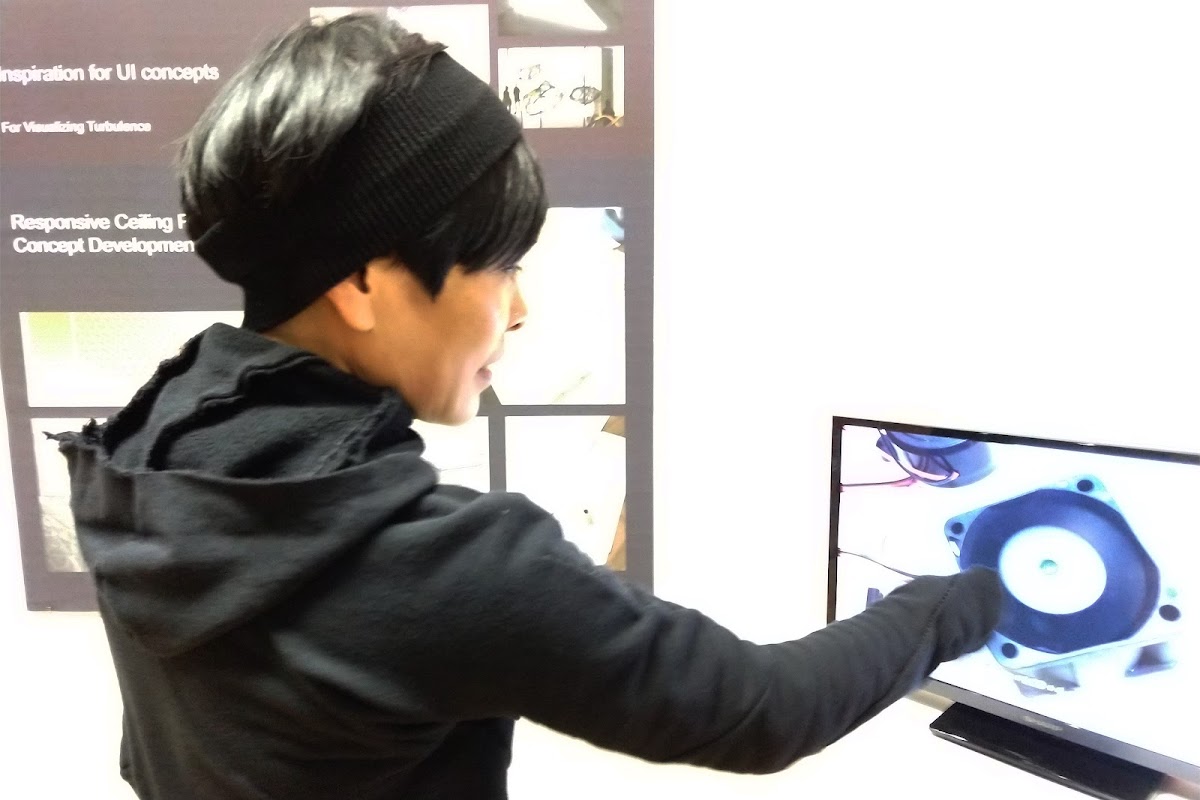Smart Technology with Soul

As artificial intelligence takes on a larger and more visible role in our daily lives—guiding everything from Siri and Alexa to self-driving vehicles and smart homes with customized heating and cooling systems—industrial designers like Soojung Ham 92 ID are considering its effects on human emotion. How does it feel to enter a space and interact with smart technology?
“My goal is to create a responsive user environment that will raise awareness of AI and facilitate a peaceful coexistence between humanity and emerging computing technology,” says Ham.

An associate professor in RISD’s Industrial Design department and a product design expert, Ham is currently sharing her research with fellow faculty members and students in an exhibition on view (through December 3) in the ID Building’s first-floor space.
Visitors can study her exploratory sketches, examine her iterative approach to designing and fabricating the necessary parts for the system she’s developing and watch a live demo of her miniature robotics-driven prototype simulating how an overhead HVAC system might respond to people as they enter its orbit.
“My goal is to... facilitate a peaceful coexistence between humanity and emerging computing technology.”
“This exhibition is really about helping people to visualize the concept,” Ham explains. “I’m hoping to design and build a full-scale installation incorporating light, color and sound with help from engineers, AI experts and other artists.”

The work began in earnest while Ham was on sabbatical and had the time to painstakingly teach herself to code and to fabricate motors and sensors that could work together seamlessly. “I used Arduino coding software, a 3D printer and a lot of customized circuit boards,” she says. “There were many trials, failures and burnt out circuit boards before I was finally able to produce something that worked.”
Ham is currently looking for funding to support the project’s second phase and is also thinking about how these ideas might generate a commercial product that could be used in homes, offices and larger gathering spaces like museums and shops.

“The key is to keep the design simple and efficient,” she says, “while developing an algorithm that connects devices, people and the environment and integrates human emotion—not as a secondary consideration but a core element of the design.”
This kind of human-centered design thinking is central to Ham’s teaching practice as well, and she plans to incorporate coding and other skills she’s picking up into future classes she’s developing for the department. “A lot of the current curriculum is theoretical,” she explains, “but students should see that they can also make tangible things. I hope my work will inspire them to develop more skills, which will in turn give them more options.”
—Simone Solondz
November 21, 2019